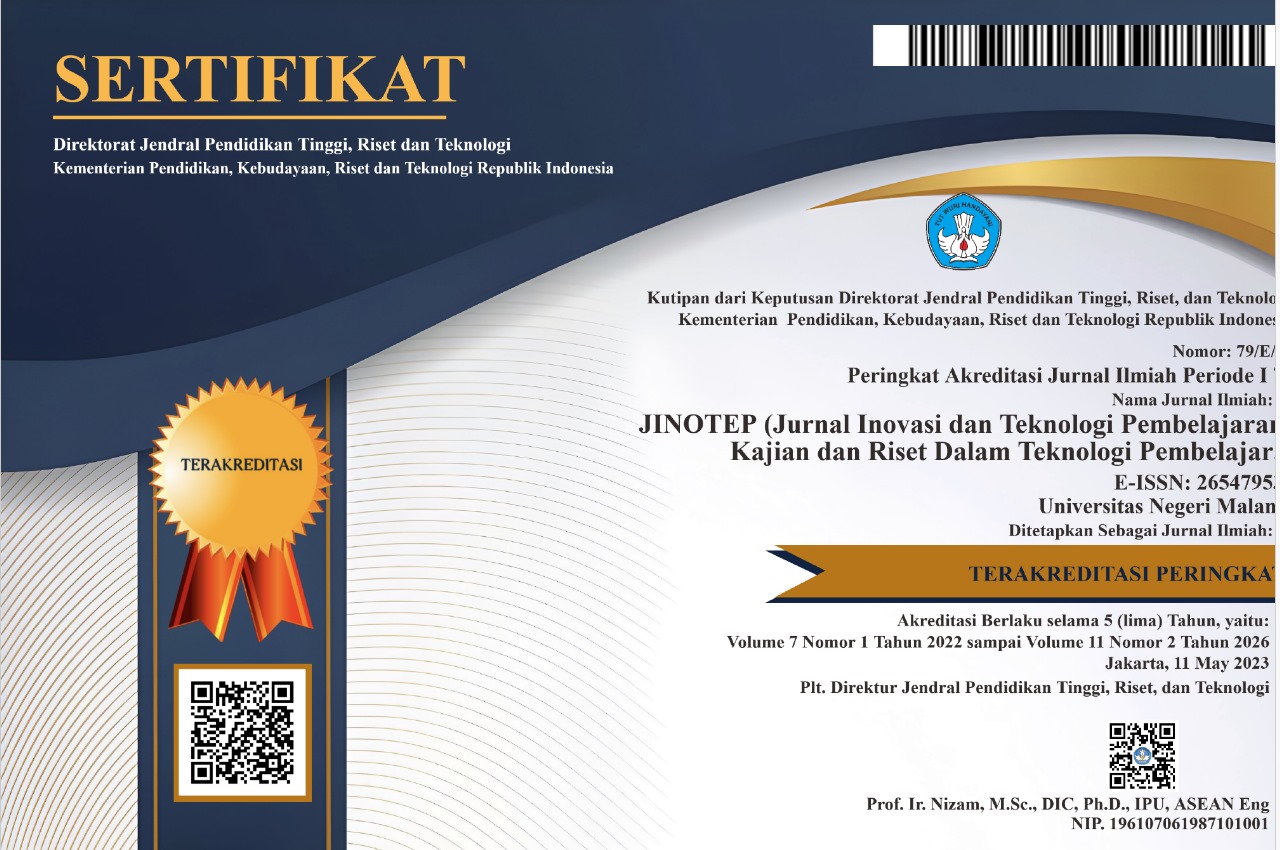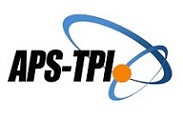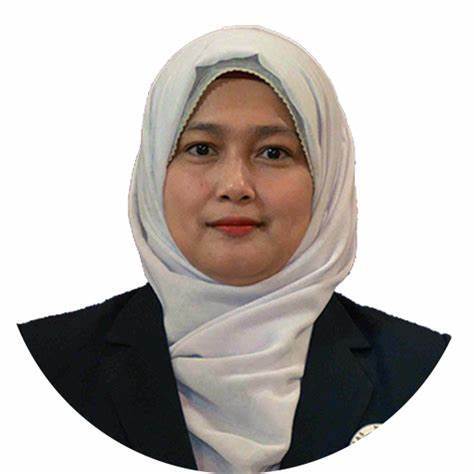Communicative Language Teaching (CLT) Approach in Kampung Inggris Pare in The New Normal Period
Abstract
Abstrak: Tujuan dari penelitian ini adalah mendeskripsikan implementasi pendekatan CLT di Kampung Inggris Pare pada masa new normal. Penelitian ini menggunakan pendekatan kualitatif deskriptif dengan jenis penelitian studi kasus. Hasil penelitian menunjukkan implementasi pendekatan CLT pada masa new normal dengan memperhatikan Surat Keputusan Bersama tentang Pedoman Pelaksanaan Pembelajaran selama pandemiCOVID-19. Desain pembelajaran tetap bertumpu pada proses untuk meningkatkan kemampuan berbicara siswa melalui Discovery Learning seperti praktek berbicara, presentasi, dan diskusi, serta kebijakan institusional seperti English Area dan pemberlakuan protokol kesehatan. Disimpulkan bahwa implementasi pendekatan CLT dapat menyesuaikan dengan kebiasaan baru di masa pendemi tanpa harus menghilangkan makna dan subtansi pendekatan yang menjadi ciri khas dari Kampung Inggris Pare.
Abstract: This study aims to describe the implementation of the Communicative Language Teaching (CLT) approach in Kampung Inggris Pare during the new normal period. The research method used is a descriptive qualitative, case study. The study results indicate the implementation of the CLT approach during the new normal period takes into account the Joint Decree on Guidelines for the Implementation of Learning during the COVID -19 Pandemic. Instructional design still relies on processes to improve students' speaking skills through Discovery Learning strategies such as speaking practice, presentation, and discussion, as well as institutional policies such as the English Area and the health protocol. It can be concluded that the implementation of the CLT approach can adapt to new habits during the pandemic without having to lose the meaning and substance of the approach which is characteristic of Kampung Inggris Pare.
Keywords
Full Text:
PDFReferences
Alharbi, A. S. (2021). Barriers in implementing communicative language teaching approach: EFL learners’ perspective. Journal of Education and Practice, 12(9), 1–20. https://doi.org/10.7176/jep/12-9-01
Alibekova, Z., & Urinboyeva, F. (2020). Methods of a communicative approach in teaching english. EPRA International Journal of Research and Development (IJRD), 7838(January), 185–188. https://doi.org/10.36713/epra2016
Armnzai, M., & Alakrash, H. (2021). Factors affecting the application of communicative language teaching CLT in Syrian schools. TESOL and Technology Studies, 2(1), 1–14. https://doi.org/10.48185/-tts.v2i1.143
Baturay, M. H. (2008). Characteristics of basic instructional design models. Ekev Academic Review, 12(34), 471–482.
Bond, J., & Dirkin, K. (2020). What models are instructional designers using today? Journal of Applied Instructional Design, 9(2), 1–9. https://doi.org/10.51869/92jbkd
Branch, R. M. (2009). Approach, instructional design: the ADDIE. In Department of Educational Psychology and Instructional Technology University of Georgia, 53(9).
Celce-Murcia, M., Dörnyei, Z., & Thurrell, S. (1995). Communicative competence: a pedagogically motivated model with content specifications. Issues in Applied Linguistics, 6(2), 5–35.
Christianto, D. (2019). Teachers' perceptions on the use of the communicative language teaching approach in the English classrooms. International Journal of Indonesian Education and Teaching, 3(1), 128–136. https://doi.org/10.24071/ijiet.v3i1.1707
Garrison, D. R., & Akyol, Z. (2009). Role of instructional technology in the transformation of higher education. Journal of Computing in Higher Education, 21(1), 19–30. https://doi.org/10.1007/s12528-009-9014-7
Gerlach, V. S., Ely, D. P., & Melnick, R. (1980). Teaching and Media. Prentice-Hall.
Ghani, M. T. A., & Daud, W. A. A. W. (2018). Adaptation of ADDIE instructional model in developing educational website for language learning. Global Journal Al-Thaqafah, 8(2), 7–16. https://doi.org/10.7187/GJAT122018-1
Heinich, R., Molenda, M., Russel, J. D., & Smaldino, S. E. (2002). Instructional Media and Technology for Learning. Pearson Education Ltd.
Helgesen, M., & Brown, S. (2007). Practical English Language Teaching. McGraw-Hill.
Ho, Y. C. (2020). Sport & tourism education communicative language teaching and english as a foreign language undergraduates ’ communicative competence in tourism english. Journal of Hospitality, Leisure, Sport & Tourism Education, 27(1), 100271. https://doi.org/10.1016/j.jhlste.2020.100271
Littlewood, W. (2011). Communicative Language Teaching: An Expanding Concept for a Changing World. In Handbook of research in second language teaching and learning (pp. 541–557). Routledge.
Littlewood, W., William, L., & Swan, M. (1981). Communicative Language Teaching: An Introduction. Cambridge university press.
Madya, S. (2013). Metodologi Pengajaran Bahasa: dari Era Prametode sampai Era Pascametode. UNY Press.
Mahruf, A. L., & Sari, D. K. (2022). Teachers’ strategies in teaching speaking at english courses as a foreign language in Kampung Inggris. SAGA: Journal of English Language Teaching and Applied Linguistics, 3(1), 41–50. https://doi.org/10.21460/saga.2022.31.89
Mangaleswaran, S., & Aziz, A. A. (2019). The impact of the implementation of CLT on students’ speaking skills. International Journal of Scientific and Research Publications (IJSRP), 9(4), p8814. https://doi.org/10.29322/ijsrp.9.04.2019.p8814
McDonald, J. K., & Yanchar, S. C. (2020). Towards a view of original theory in instructional design. Educational Technology Research and Development, 68(2), 633–651. https://doi.org/10.1007/-s11423-019-09734-8
Molenda, M., & Harris, P. (2001). Instructional Technology. Educational Media and Technology Yearbook 2001, 26, 3.
Muhajirah. (2020). Basic of learning theory (behaviorism, cognitivism, constructivism, and humanism). International Journal of Asian Education, 1(1), 37–42. https://doi.org/10.46966/ijae.v1i1.23
Nurdyansyah, N. (2019). Media Pembelajaran Inovatif. Umsida Press.
Pratiwi, W. R. (2021). Communicative visual media-based speaking instructional methods at peace Kampung Inggris Pare. Klasikal: Journal of Education, Language Teaching and Science, 3(1), 31–40. https://doi.org/10.52208/klasikal.v3i1.91
Pratiwi, W. R., Atmowardoyo, H., & Salija, K. (2020). The need analysis of participation in an english immersion village at Kampung Inggris Pare. International Journal of Language Education, 4(1), 158–170. https://doi.org/10.26858/ijole.v4i2.12599
Rahman, M. M., Pandian, A., & Kaur, M. (2018). Factors affecting teachers’ implementation of communicative language teaching curriculum in secondary schools in Bangladesh. Qualitative Report, 23(5), 1104–1126. https://doi.org/10.46743/2160-3715/2018.3220
Richards, J. C. (2005). Communicative Language Teaching Today. SEAMEO Regional Language Centre Singapore.
Savignon, S. J. (1987). Communicative Language Teaching. Theory Into Practice, 26(4), 235–242. https://doi.org/10.1080/00405848709543281
Savignon, S. J., & Sysoyev, P. V. (2002). Sociocultural strategies for a dialogue of cultures. The Modern Language Journal, 86(4), 508–524. https://doi.org/10.1111/1540-4781.00158
Setyosari, P. (2020). Desain Pembelajaran. Bumi Aksara.
Slavin, R. E. (2012). Educational Psychology: Theory and Practice.
Smaldino, S. E., Lowther, D. L., Russell, J. D., & Mims, C. (2008). Instructional technology and media for learning.
Tiwari, T. D. (2021). The implementation of communicative language teaching approach in selected secondary school: Nepalese teachers’ perspective. Utamax : Journal of Ultimate Research and Trends in Education, 3(3), 187–197. https://doi.org/10.31849/utamax.v3i3.8242
Toro, V., Camacho-minuche, G., Pinza-tapia, E., & Paredes, F. (2019). The use of the communicative language teaching approach to improve students ’ oral skills. 12(1),110-118. https://doi.org/10.5539/elt.v12n1-p110
Trust, T., & Pektas, E. (2018). Using the ADDIE model and universal design for learning principles to develop an open online course for teacher professional development. Journal of Digital Learning in Teacher Education, 34(4), 219–233. https://doi.org/10.1080/21532974.2018.1494521
Wei, L., Lin, H.-H., & Litton, F. (2018). Communicative language teaching (CLT) in EFL context in Asia. Asian Culture and History, 10(2), 1-9. https://doi.org/10.5539/ach.v10n2p1
Winata, K. A., Zaqiah, Q. Y., Supiana, S., & Helmawati, H. (2021). Kebijakan pendidikan di masa pandemi. Ad-Man-Pend: Jurnal Administrasi Manajemen Pendidikan, 4(1), 1–6. https://doi.org/doi.org/10.32502/-amp.v4i1.3338
Yanti, G. S., Tinggi, S., & Asing, B. (2019). Perceptions and attitudes of indonesian teachers toward communicative language teaching. Jurnal Ilmiah Spectral, 5(1), 1–18. https://doi.org/10.47255/-spectral.v5i1.33.
DOI: http://dx.doi.org/10.17977/um031v9i92022p250
Refbacks
Copyright (c) 2022 Rafiud Ilmudinulloh, Ahmad Bustomi, Widya Rizky Pratiwi, Muhammad Ilyas

This work is licensed under a Creative Commons Attribution-ShareAlike 4.0 International License.
======================================================================
Jurnal Inovasi dan Teknologi Pembelajaran published by Universitas Negeri Malang in collaboration with the Asosiasi Program Studi Teknologi Pendidikan Indonesia (APS TPI) and Ikatan Profesi Teknologi Pendidikan Indonesia (IPTPI) with a MoU.
Publisher Address:
Educational Technology Laboratorium, Building D5, 1st Floor
Faculty of Education, Universitas Negeri Malang
Semarang St. No. 5, Malang City, East Java Province, Postal Code 65145
Email: jinotep.fip@um.ac.id
======================================================================

JINOTEP is licensed under a Creative Commons Attribution-ShareAlike 4.0 International License.
JINOTEP Statistics (Since July 13th, 2020)



.png)




.png)
1.png)
1.png)
4.png)
2.png)
1.png)
1.png)
.png)


_3.png)





1.png)
.png)